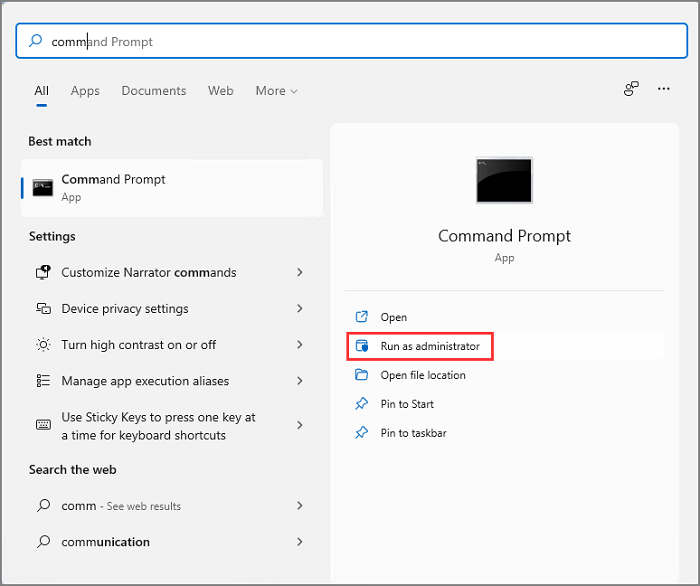Learn how to repair the Windows 11 registry using the command prompt and other methods. Our step-by-step guide will help you fix common registry errors and improve system performance.
Introduction:
The Windows registry is a critical component of the operating system that contains information about system settings, hardware, software, and user preferences. Over time, the registry can become corrupted or damaged, leading to performance issues, crashes, and other problems. Fortunately, there are several ways to repair the Windows 11 registry, including using the command prompt and other tools. In this article, we’ll show you how to repair the Windows 11 registry using different methods.

Method 1: Repair Windows 11 Registry from Command Prompt
Here are the steps to repair the Windows 11 registry using the command prompt:
Step 1: Open the Command Prompt as Administrator
Open the command prompt by pressing the Windows key + R on your keyboard, typing “cmd” and hitting enter. Right-click on the Command Prompt app and select “Run as Administrator.”
Step 2: Run the System File Checker (SFC) Tool
Type “sfc /scannow” in the command prompt and hit enter. This will run the System File Checker tool, which will scan your system for any corrupt or damaged files and repair them if possible.
Step 3: Run the Deployment Image Servicing and Management (DISM) Tool
Type “dism /online /cleanup-image /restorehealth” in the command prompt and hit enter. This will run the DISM tool, which will repair any damaged system files and update the Windows image.
Method 2: Use System Restore to Repair Windows 11 Registry
System Restore is a Windows feature that allows you to restore your system to a previous state. Here’s how to use System Restore to repair the Windows 11 registry:
Step 1: Open System Restore
Type “system restore” in the Windows search bar and select “Create a restore point.” In the System Properties window, click on the System Protection tab and select “System Restore.”
H3: Step 2: Choose a Restore Point
Select a restore point from the list and click on “Next.” Follow the on-screen instructions to complete the restoration process.
Method 3: Use Third-Party Registry Repair Software
There are several third-party registry repair software programs available that can scan and repair the Windows 11 registry. Here are some popular options:
- CCleaner
- Auslogics Registry Cleaner
- Wise Registry Cleaner
Some FAQs on repairing the Windows 11 Registry from CMD and other ways:
Q: What is the Windows 11 Registry? A: The Windows 11 Registry is a central database that stores configuration settings and options for the operating system and installed applications. It contains information about hardware devices, user preferences, installed software, and more.
Q: Why might I need to repair the Windows 11 Registry? A: The Windows 11 Registry can become corrupted or damaged over time, which can cause system errors, crashes, and other issues. Repairing the Registry can help resolve these problems and improve system performance.
Q: How can I repair the Windows 11 Registry from CMD? A: You can use the Command Prompt (CMD) in Windows 11 to repair the Registry using the “sfc /scannow” command. This command will scan your system files and repair any corrupted files it finds, including those in the Registry. You can also use the “DISM /Online /Cleanup-Image /RestoreHealth” command to repair any damaged system images.
Q: Are there any other ways to repair the Windows 11 Registry? A: Yes, there are other ways to repair the Windows 11 Registry. You can use a third-party Registry cleaner or repair tool, such as CCleaner or Auslogics Registry Cleaner. These tools can help identify and repair Registry errors and optimize system performance. However, be cautious when using these tools, as they can sometimes cause more harm than good if used improperly.
Q: Can I manually edit the Windows 11 Registry to repair it? A: Yes, you can manually edit the Windows 11 Registry using the Registry Editor (regedit). However, this should only be done by advanced users who are familiar with the Registry and its structure. Making incorrect edits to the Registry can cause serious system problems, so it is recommended to create a backup of the Registry before making any changes.
Q: What should I do if repairing the Windows 11 Registry doesn’t fix my system issues? A: If repairing the Registry does not resolve your system issues, there may be other underlying problems with your system. You can try running a virus scan, updating drivers, or performing a system restore to a previous restore point. If these methods do not work, it may be necessary to reinstall the operating system.
Conclusion
In conclusion, the Windows 11 registry is a critical component of the operating system, and it’s important to keep it healthy and free of errors. By using the command prompt, System Restore, or third-party registry repair software, you can repair the registry and improve system performance. Remember to back up your registry before making any changes and use caution when making edits to the registry.



